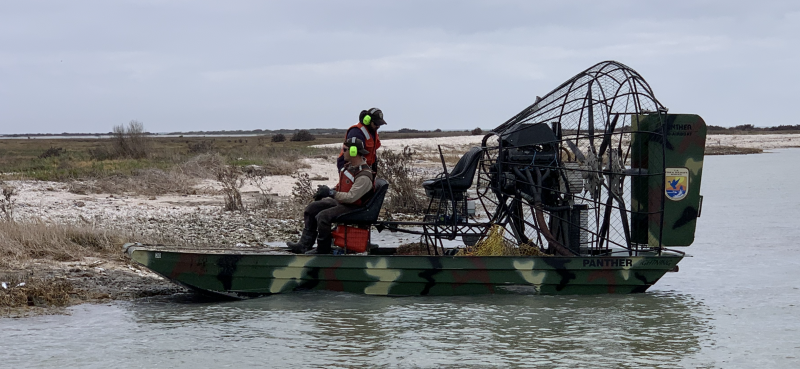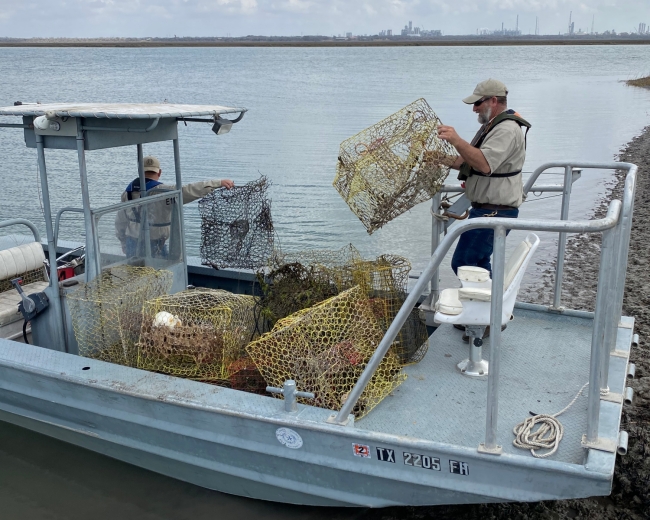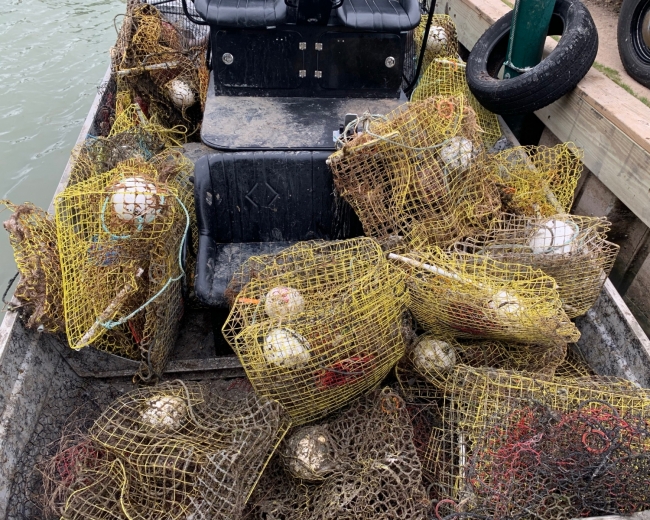Guest blog by: Leigh Perry, Project Manager, Coastal Bend Bays & Estuaries Program
Most of us in coastal communities know the term “ghost fishing” and why it is bad, but to get a handle on the problem here in the Texas Mid-Coast area local scientists are diving deeper into the issue by looking for the root causes of the problem.
Besides being unsightly litter in our bays and estuaries, many of the abandoned crab traps continue to “ghost fish” and catch estuarine wildlife, many of which are recreationally or commercially important species. These abandoned traps can also have negative effects on sensitive habitats, such as seagrass and salt marsh, and the species that depend on them.
To help address the problems associated with abandoned crab traps, every bay system in Texas closes to crabbing for a 10-day period each February to allow for derelict traps to be removed. The statewide closure has been in place for 18 years, and although the number of abandoned traps collected has decreased over time, there are still numerous derelict traps recovered from our bays and estuaries each year.
The Coastal Bend Bays & Estuaries Program (CBBEP), with funding from a NOAA Marine Debris Program removal grant, is expanding efforts to remove derelict traps and gathering standardized data that can be used to better assess the ecological and economic impacts, as well as the root causes of trap abandonment.

This two-year project is a collaborative effort between numerous agencies and volunteers. The CBBEP is partnering with the San Antonio Bay Partnership (SABP) to organize volunteers to remove derelict crab traps in coastal waters in Texas, from Matagorda Bay to Aransas Bay, during the 10-day closure period in February of 2021 and 2022. In addition to trap removal, volunteers for the Abandoned Crab Trap Removal Program will use a smartphone app to collect specific data parameters about each derelict trap that will then be used to help pinpoint the root causes of trap abandonment in our area. Once the root causes are identified, the SABP will work with the Harte Research Institute for Gulf of Mexico Studies at Texas A&M University-Corpus Christi to develop and implement an outreach plan that engages commercial crabbers in a common goal of reducing trap dereliction.
This year’s abandoned trap removal event was a huge undertaking, involving 60 boats and 148 volunteers. Due to the major winter storm Uri, volunteers only had seven days to collect abandoned traps instead of the usual 10 days. Volunteers still managed to collect a total of 1,207 derelict crab traps, removing approximately six tons of debris from our bays and estuaries. The effort was led by the SABP, Mission-Aransas National Estuarine Research Reserve, the Lavaca Bay Foundation, and the Matagorda Bay Foundation. The project team hopes to have this year’s data analysis completed by this summer and are already busy planning the February 2022 removal event.





